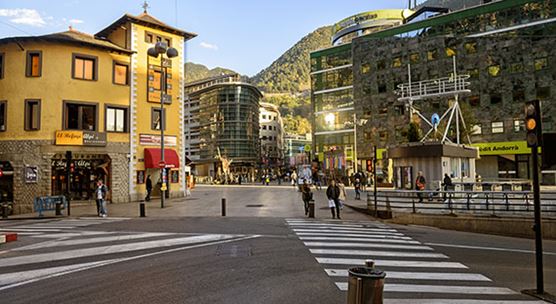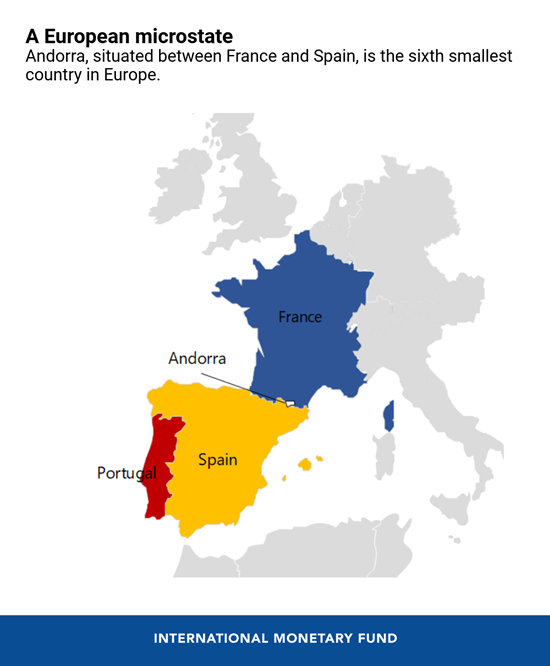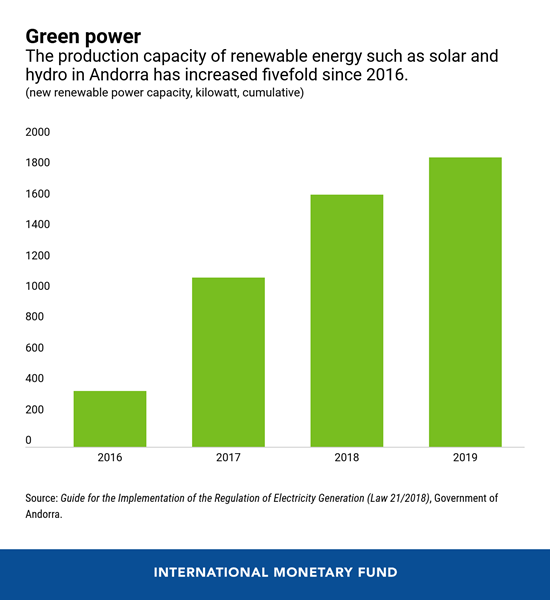
Downtown Andorra la Vella, capital of Andorra. On October 16, 2020 Andorra became the IMF’s 190th member. (photo: minemero/iStock)
Andorra: Five Things You May Not Know About the IMF’s 190th Member
October 16, 2020
Today the IMF welcomed the Principality of Andorra as its 190th member. Andorra—a microstate situated between France and Spain—joined the IMF when Elisenda Vives Balmaña, Ambassador of Andorra to the United States, Canada, and Mexico, and Permanent Representative of Andorra at the United Nations, signed the IMF’s Articles of Agreement at a ceremony in Washington, D.C.
Andorra applied for membership to the IMF in January 2020. The process, which included collecting economic information for the calculation of Andorra’s quota, was completed virtually due to the travel restrictions related to COVID-19. Several IMF departments worked together to make this happen—European, Finance, Legal, Secretary’s, and Statistics.
Membership benefits
Membership allows the Andorran government to benefit from IMF policy advice, especially as the country tackles the crisis caused by COVID-19 and develops policies for a sustained recovery. In particular, the country can now receive an annual review or “health check” of its economy by the IMF, tap technical assistance, and access IMF lending if needed.
Andorra can now also attend the IMF-World Bank Spring and Annual Meetings as a full member, where delegates from around the world meet and exchange views on the state of the global economy.
Five interesting facts
- Andorra is tiny, but it is the largest microstate in Europe. With an area of 181 square miles, Andorra is about two-thirds the size of the island city-state of Singapore. However, it is the largest among the six European microstates, followed by Liechtenstein, Malta, Monaco, San Marino, and Vatican City.
- While it uses the euro, Andorra is not part of the euro area or the EU. The principality formally became a parliamentary democracy in May 1993, following the approval of a new constitution by popular referendum. The head of government is the chief executive, while the President of France and the Bishop of Urgell in Spain are the joint heads of state or “co-princes.” The country does not have its own currency and does not have a central bank. Before the euro was introduced, Andorra used the Spanish peseta and the French franc. While it is not a member of the EU, Andorra is negotiating an Association Agreement with the bloc to gain access to its internal market.
- The main industries in Andorra are tourism, trade, and banking. The landlocked nation located in the high mountains of the Pyrenees transformed from a largely agricultural and livestock-based country to a regional financial center in the 1950s, and a tourism destination more recently. Now, trade and tourism comprise close to 40 percent of the economy’s output and the financial sector accounts for another 20 percent. In 2019, Andorra received over 8 million visitors who came mostly from Spain and France for its well-known ski slopes and mountain biking trails.
- About half of Andorran parliamentarians are women, compared with less than a quarter globally. Almost 47 percent of the parliamentarians, including the Speaker and the Alternate Speaker, in this nation of 77,000 are women. There is perfect gender balance among the ministers as well. This was achieved without any quotas or legal requirements.
- Andorra is committed to environmental sustainability. The country achieved a fivefold increase in its renewable energy capacity since 2016. While its efforts are now focused on transportation and heating—the main sources of emissions in the country—the government has also established long-term goals to reduce energy dependence and increase the production of renewable energy by 2030 and achieving carbon neutrality by 2050.









